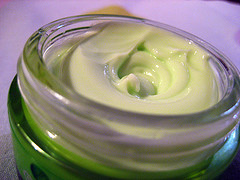People use anti-ageing products in skincare each day. Ranging from sunscreens to skin creams, serums, etc., these products are advertised by companies to help stave off your skin’s physical ageing and prolong youth. The skincare industry is so important that the global projected revenues for skincare is estimated to reach 102.3 billion dollars by year 2018. With all the glut of skincare products marketed towards maintaining youth, consumers feel the need to use multiple products at one time by layering one product over the other. Skin care products are advertised in a way that entices the customer to buy them. This can range from fancy packaging to the use of rare ingredients that supposedly unlock the secret to youthful skin.
Unfortunately, layering products on top of each other may not be the best way to get the most out them. This is because some products work effectively at different pH levels.
It seems intuitive to layer your skin care products that contain Retinol (vitamin A) with products that contain L-Ascorbic acid. Both are anti-oxidants that protect your skin against free radical damage, a main cause of ageing. Free radicals are oxygen molecules that have attached themselves to molecules in the skin. These new oxygen molecules break down your molecules in the skin.
Antioxidants work by destroying the chain of free radical molecules, preventing further break down. The consumer thinks that layering will give double duty protecting against ageing. From a scientific standpoint, that is not the case. Retinol works best at a neutral pH. On the other hand, L-Ascorbic acid works best at an acidic pH. Retinol requires a two step process to after it has been applied to the skin to work effectively. The acidity of L-Ascorbic acid decreases the efficacy of the two step process to occur, therefore reducing the effectiveness of retinol.

Skincare product in jar packaging. From Flickr.
The packaging and storage of skincare products also matters in the effectiveness of the ingredients inside. When the ingredient used in skincare products are constantly exposed to air, the chemicals break down much faster. This renders the ingredients less effective in combatting ageing. A study published in Pharmaceutical Development and Technology found that antioxidants in jar packaging degraded faster than antioxidants in more airtight packaging (i.e. squeeze tubes or pumps). This is due to the exposure to oxygen in the air. Repeated opening and closing of a jar of your favourite serum or moisturizer will introduce oxygen to the ingredients.
Next time you want to layer your skin care products on top of each other, consider how the ingredients inside them will interact. In addition, consider the packaging that the products are in.
Jade Lu

One response to “Factors That Reduce the Effectiveness of Your Anti-Ageing Skincare Products”